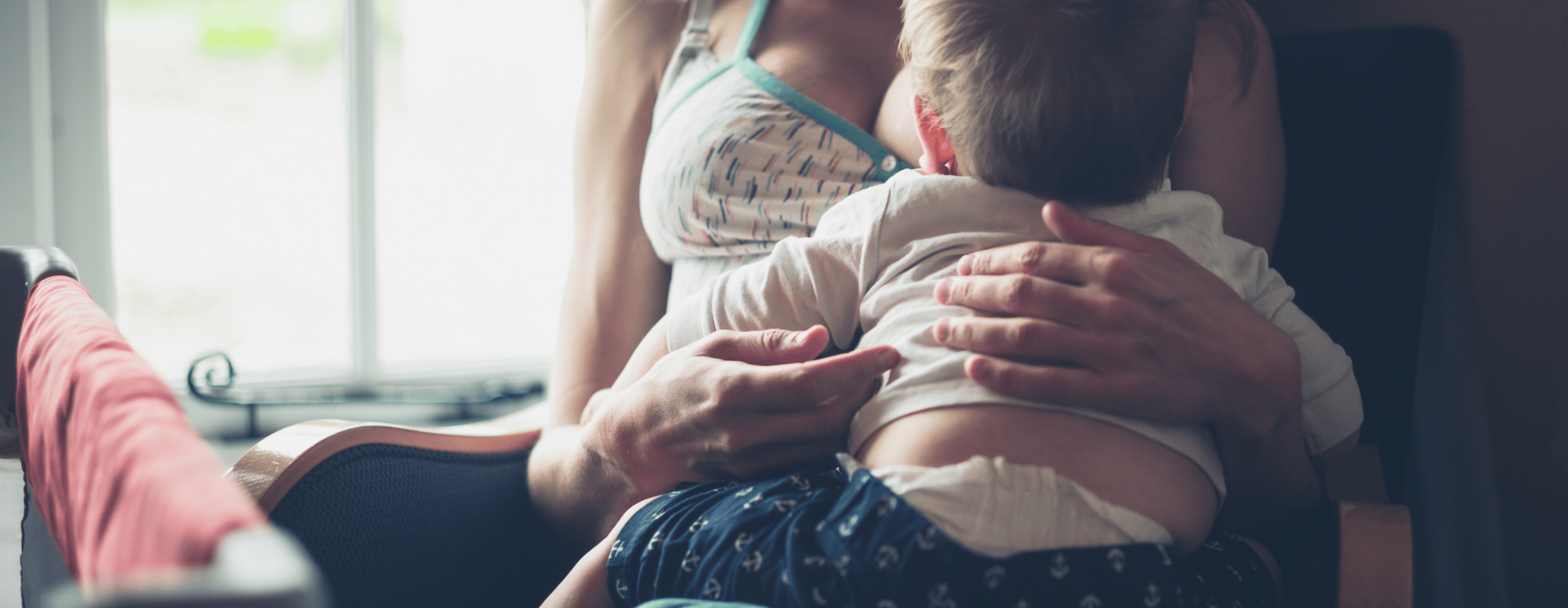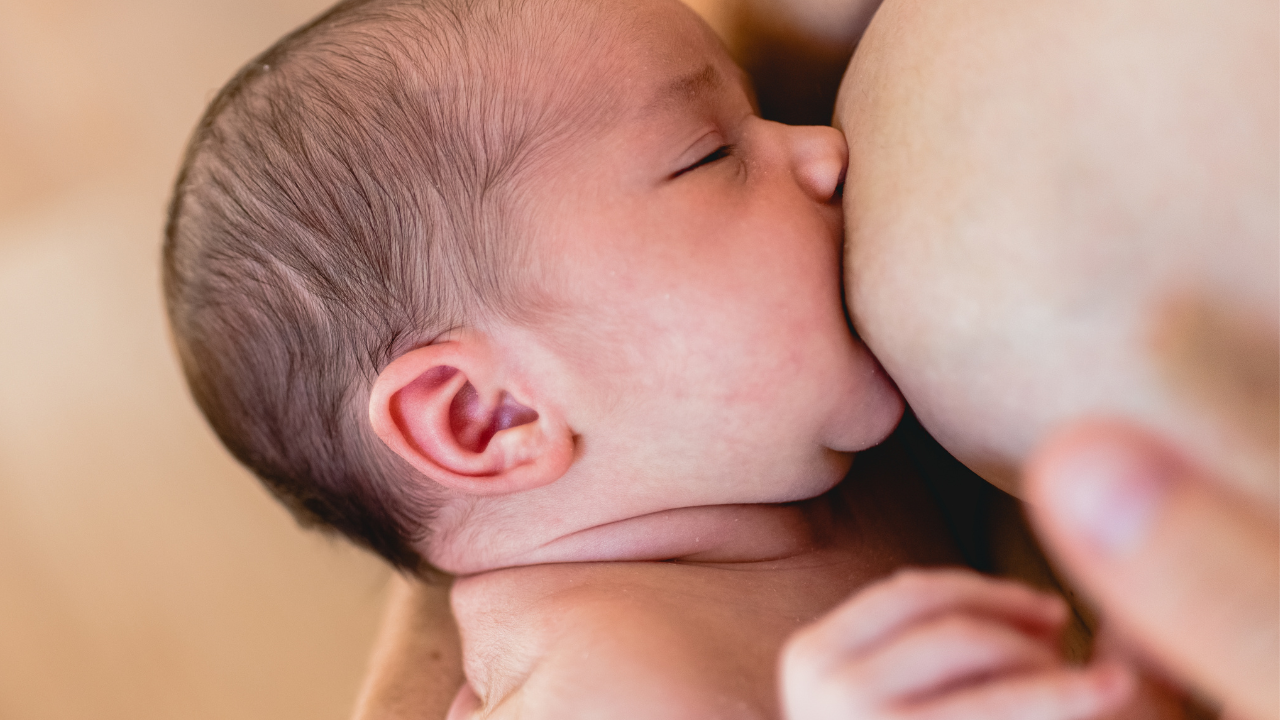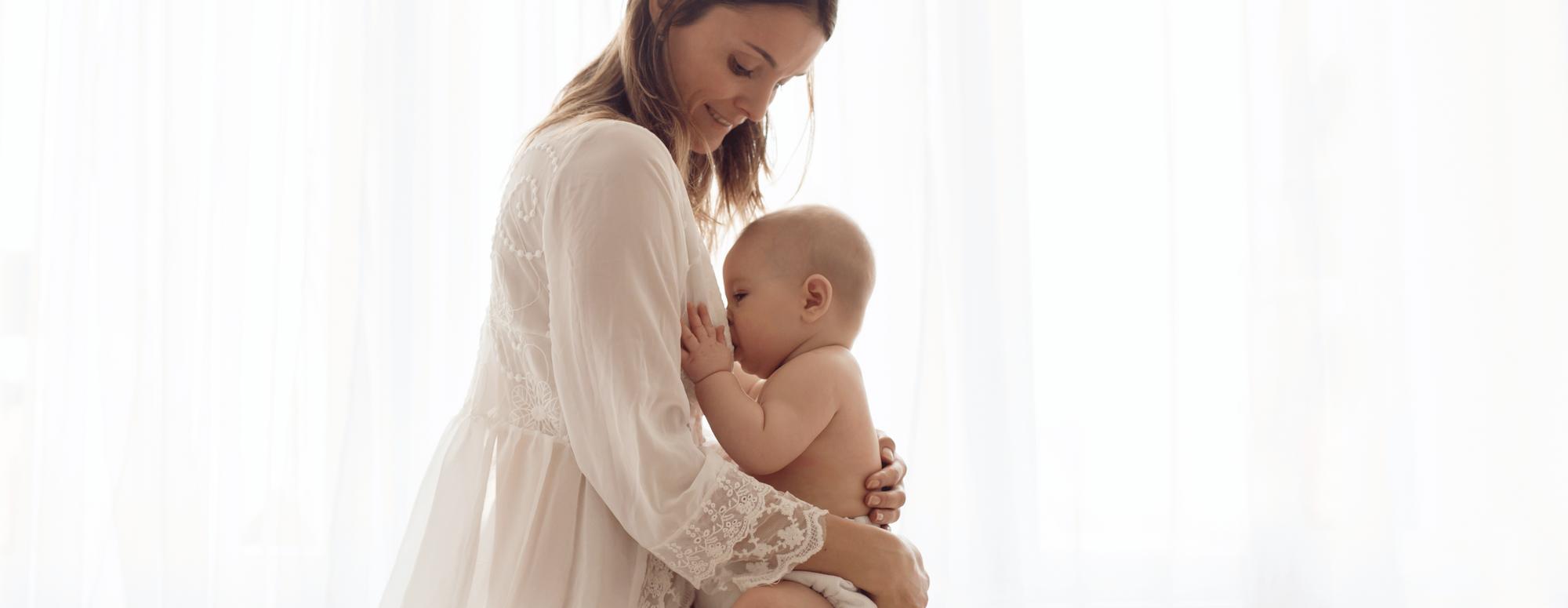Upright Breastfeeding Positions
For something that is intrinsically ours as women, it sure does take a lot of trial and error for most of us! Finding a breastfeeding position that works for you and your baby is well worth the effort.

The Upright Breastfeeding Position
Breastfeeding is one of the world's most common and natural acts – but it takes practice!
So let me introduce you to the upright feeding position. It is also called the Koala, Saddle position, or the Australian feeding position.

Firstly, let me reassure you that there is no right or wrong way to breastfeed. If you have found a comfortable position for you and your baby, hang on to it! The main thing is that your little one is latching well and getting the nutrition they need.
If you’ve already had your baby, you will soon realize that your little bundle of joy comes with likes and dislikes. They can be extraordinarily feisty and demanding, especially if you are a few seconds late in whipping off your shirt and presenting them with your bosom. Some babies prefer to feed upright, and some won’t latch in this position.
The upright hold works very well for the slightly older baby, who can already hold their head up. If you have a particularly active baby who loves to look around, this location gives them a better view of their surroundings.

Upright Position Benefits
- Painful nipples! This position helps reduce nipple pain and blocked ducts, and some babies latch very easily. Some babies seem to inflict injury to just one part of the nipple, so changing their current position to the upright position may reduce the damage to that area.
- Forceful let-down reflex. It is helpful to moms with a strong let-down reflex as they can lean back and slow down the flow a little. It helps prevent the baby from choking and spluttering from fast-flowing milk.
- Excess wind or colic. In this position, gravity helps keep the milk in the baby’s tummy after swallowing rather than coming back up. This also allows them to burp a little easier.
- If your baby is getting too heavy to hold in a cradle position, then the upright position may take a bit of strain off your body.
- Mastitis and blocked ducts. This position drains the milk from the lower part of the breast, which could help moms struggling with blocked ducts or mastitis in this area.
- Babies with runny noses or blocked ears. If your little one suffers from any mouth deformities or difficulties (cleft pallet, breathing, or swallowing issues) or you have a reflux baby, this breastfeeding position may be beneficial.
- If your baby is particularly fond of being in the sling or pouch, this feeding method fits perfectly, and the mom can nurse while standing or walking.

How to Breastfeed in the Upright Position
- One of the most important things is to make sure that your baby’s head and neck are supported and in alignment.
- Sit comfortably in a chair. If it is easier for you, recline a little.
- With you in this upright position, have your baby straddle your leg, with their head facing your breast.
- You would want his body to be gently pressed against yours. So this would be like a tummy-to-tummy cuddle position.
- The baby sits straight up and feeds on the breast on the same side he is facing.
- Support baby’s head with the arm on the same side that baby is feeding. Even though the head is supported, ensure they can tilt their head back to feed.
- Let your little one lean forward towards your breast, allowing them to find the nipple.
- You may need to move your breast a little to get them latching well.
- If your baby isn't tall enough to access the breast comfortably, consider elevating them by folding a towel or using a pillow. This will help them reach the nipple more easily.
- Your baby’s nose should be in line with the nipple. You could brush their nose with the nipple to encourage them to open their mouth widely and latch on.
- If it doesn’t feel comfortable, put your clean finger into your baby’s mouth to release the latch and try again.
When all is said and done, as long as you are comfortable, your baby is latching well, and nursing is a happy time (more or less), then whichever breastfeeding position you use is ultimately right.

Breastfeeding Class for Moms
Many mothers worry about breastfeeding not working for them, the pain and struggles associated with latching, and concerns about milk supply. The course tackles these fears head-on.
The course offers 13 easy-to-watch lessons, providing a step-by-step guide to breastfeeding.
The Reclined Position
So, you know how sometimes you just need to lean back and relax? Well, turns out the same concept can apply to breastfeeding too. It's called the reclined breastfeeding position, also known as biological nurturing or laid-back breastfeeding. Here's the gist of it:
You kick back on a comfy couch or bed and prop up some pillows behind you so you're not flat but kinda reclined at about a 45-degree angle. Then, you place your baby tummy-to-tummy on top of you. Your baby can be upright or semi-upright. You just let gravity do its thing.

Now, the great thing about this position is that it gives your baby lots of skin-to-skin contact with you, which is super important for both bonding and for keeping your little one calm and comfortable.
Another big plus is that it takes advantage of babies' natural reflexes. They have a natural instinct to search for the breast and latch on. In this position, you are giving your baby a bit more control over the feeding process.
The reclined position is also a lifesaver for moms who have had a C-section because it avoids pressure on the abdomen. And let's not forget about moms who struggle with an overactive let-down (when your milk flows too fast and too forcefully). In this position, gravity can help slow the flow.
In this position, painful cracked nipples are avoided since it can encourage a deeper latch.

Finally, and this one is a big win in my book, the laid-back position is all about comfort and relaxation. You're not sitting straight up, hunched over your baby. This could help if you're feeling stressed or tense because, as we all know, being comfortable can help your milk flow more easily.
So, in a nutshell, the reclined breastfeeding position is a fantastic option for many moms and babies. As always, though, it's crucial to do what works best for you and your baby. Not every position is perfect for everyone, and that's totally okay!
Breastfeed Your Baby in the Tushbaby
Imagine having a baby carrier that supports your hips and provides a comfortable feeding position. Using the Tushbaby while breastfeeding can alleviate strain on your body. It can be used as a nursing pillow for newborns and can provide a comfortable surface for your baby while supporting your back, arms, and upper body.
Bringing your baby close to your breast may be challenging without hunching over. Finding a nursing pillow that can be adjusted or raised to the appropriate height is essential for maintaining a safe breastfeeding posture while keeping your baby secure.
Older babies can breastfeed upright while sitting in the Tushbaby seat. It is an invaluable option for mothers seeking long-term use, not just for breastfeeding but for babywearing too.

The Tushbaby Hip Carrier
With its ergonomic design and comfortable waistband, Tushbaby provides optimal support for you and your baby. Say goodbye to shoulder and back pain from traditional carriers, as Tushbaby evenly distributes your baby's weight, relieving strain and promoting better posture.
References and Extra Resources
1. Gray, Krista. Nursing Nurture. Nursing positions.
